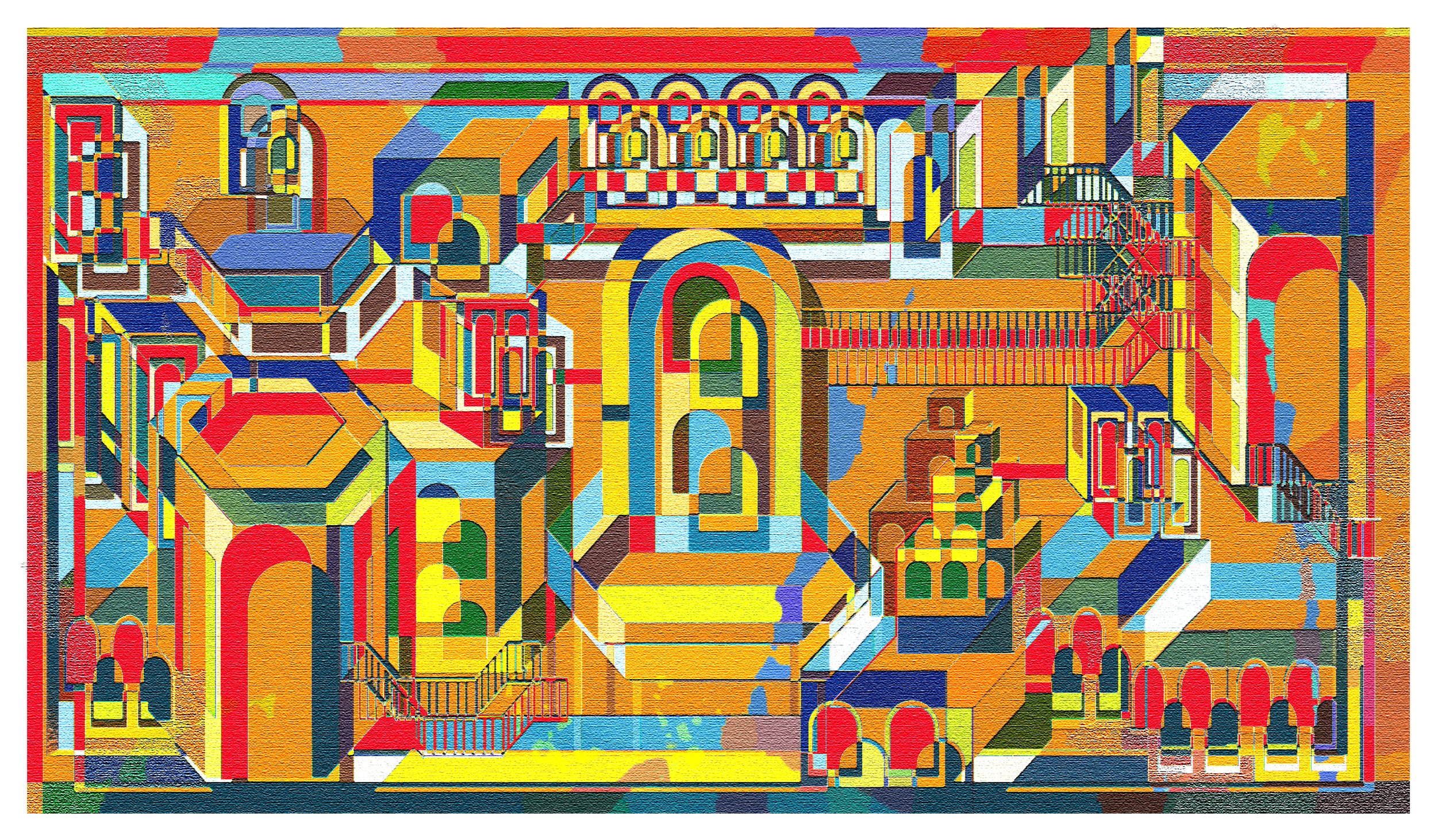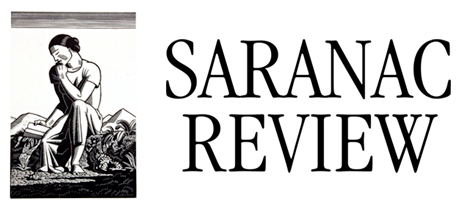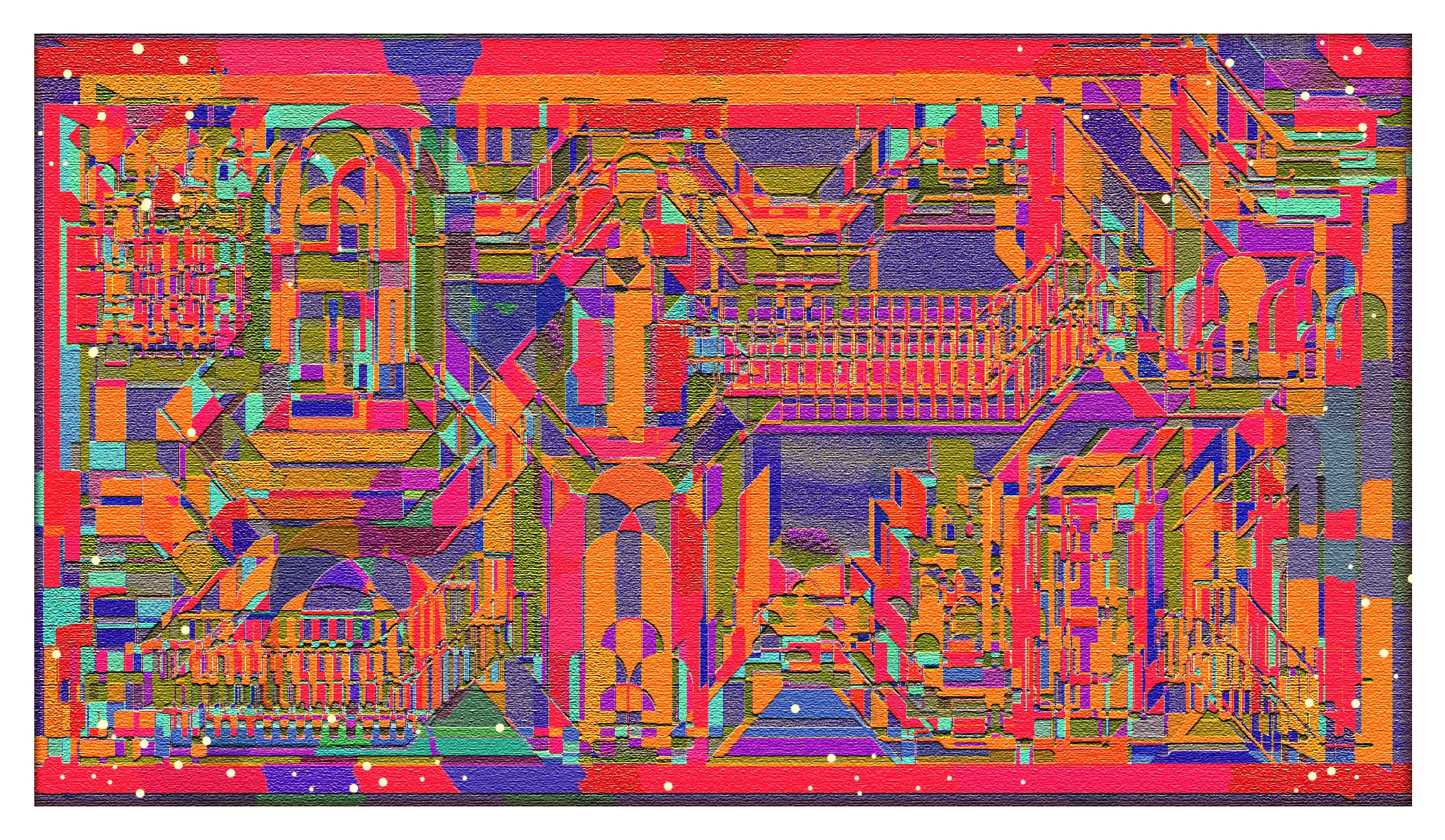
Saffron Serenity
Armita Khalatbari
Digital Art
These pieces are inspired by Persian miniature paintings which originated in Ancient Iran. They are usually highly detailed and feature elements such as domes, arches, and geometric patterns. Therefore, the architecture depicted in these digital paintings is an essential element of the overall composition. Besides using vibrant colors, they aim to convey meaning and symbolism from traditional motifs and revive the forgotten beauties of the old Persian world when the culture of Iranian illustrated stories was popular.
Although the general forms and shapes have been deconstructed and deformed in certain sections, this approach contributes to their unconventional appearance and aims to create a sense of revolution by seamlessly blending traditional patterns with the unorthodox techniques that digitalization brings to our world. The main point is that 'Authenticity' not only does not fade or disappear over time but also adapts itself to the changing dynamics and harmonizes with each era. Since originality is never like a shell sitting on the surface of something, rather it is a breeze that flows in its interior and it cannot be separated from the totality of that work. Consequently, the beauty of an original design grows over time, with technology never being perceived as a threat to its aesthetic appeal. On the contrary, technology enhances it.
Generally, these digital works are personal tributes to the authentic history of Iranian miniature art and architecture; to create them, the initial concept was sketched, and then the main form was modeled in 3DMax. After that, the final render was produced and post-processed in Photoshop.
Armita Khalatbari is an Iranian native artist. Her lifelong passion for visual art serves as a form of meditation and self-expression, and her background in architecture has contributed to her progress in promoting her artwork. While she previously worked with acrylic paints, she has now shifted her focus toward digital art and exploring limited concepts related to traditional motifs and geometric patterns. Currently, she is dedicated to transforming traditional Persian art, particularly Persian carpets and Persian miniatures, in an innovative way. In addition to her artistic pursuits, she is also an experimental writer, which allows her to expand on her ideas and organize them more logically




